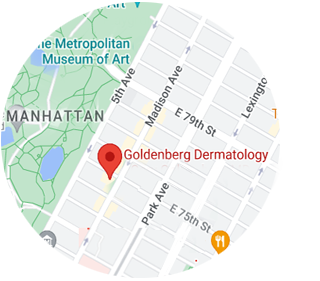Relaxants and Fillers
Minimally-invasive cosmetic procedures have become the convenient go-to treatments for those wishing to combat signs of aging with minimally invasive, non-surgical options. In its most recent statistics, the American Society of Plastic Surgeons reported a clear spike in minimally-invasive procedures, stating that in 2014 “facial rejuvenation procedures experienced the most growth.” Of 13.9 million minimally-invasive procedures reported, relaxants and fillers were the two leading treatment categories. Both relaxants and fillers are injectables – treatments that are delivered with a fine needle – but they differ in how they produce results.
What Are Relaxants?
The most popular category of cosmetic procedures–topping the chart of all procedures, both surgical and minimally-invasive is relaxants (also known as neurotoxins or toxins). At 6.7 million injections reported in 2014, the number of relaxant treatments increased 6% from the previous year.
Relaxants rely on a bacteria-derived substance called botulinum toxin type A to smooth out creases and soften fine lines and wrinkles. When injected, botulinum toxin type A temporarily inhibits nerve activity in the muscle, reducing the its ability to contract – hence the term relaxant. In result, the facial movements that contribute to formation of expression lines and wrinkles are restricted. These agents are used mostly for dynamic wrinkles – those that are cause by muscle movements.
The most common relaxant brands include:
What Are Fillers?
The second most sought-after category of minimally-invasive cosmetic procedures is fillers. Also called soft tissue fillers or dermal fillers, these products were administered to 2.3 million patients in 2014, up 3% from 2013.
Unlike relaxants, which utilize one active ingredient, fillers vary in composition. Regardless of the type, these products are used to fill lines and reshape and restore volume in facial areas that are depleted with aging. Most fillers are temporary, but some may last longer than others. The current trend is to restore facial volume that is lost with time, to bring back a natural, youthful look. While most commonly used fillers are not permanent, all products stimulate collagen growth; this newly produced collagen can be permanent or last for years.
Some commonly used fillers include:
- Hyaluronic acid fillers: Juvederm, Juvederm Voluma, Restylane Lyft, Restylane, Restylane Silk, Belotero
- Synthetic fillers: Sculptra, Radiesse
Quick Facts about Relaxants and Fillers
| Relaxants | Fillers | |
| What they treat | Frown lines; furrows between eyebrows and on the forehead; crow’s feet | Loss of volume, particularly in the cheeks; deep set wrinkles; nasolabial folds; smoker’s lines around the mouth, thin, downturned lips |
| Treatment time | 10-15 minutes | Less than 1 hour |
| Duration of results | Temporary, with touch up treatments needed every 3-6 months. | Temporary, depending on filler. Temporary fillers can last 6 to 12+ months. |
| Active agent | Botulinum Toxin Type A | Varies: hyaluronic acid (HA) or a synthetic compound |
| How they work | Restricts facial movement to help smooth out lines | Replenish volume that is lost with time and plump up lines that become deep with time; stimulate collagen production |
| Downtime | None | None |
| Risks and side effects | Bruising, drooping if over corrected. | Bruising; temporary swelling and redness at the injection site |
Which is the best choice for you?
When deciding on a rejuvenating treatment, there are several factors you should consider:
- Area of concern. Are you looking to lift your cheeks or smooth your brows? If you are after volume, your best bet is a filler. If you would like to soften lines, a relaxant treatment might be the most convenient..
- Medical history. In general, most treatments are well-tolerated, but if you have a history of allergies to a product, make sure to tell your dermatologist.
- Maintenance. How often are you willing to go to the office for upkeep.
For most patients, the best option is a combination of fillers and relaxants. These products may also be combined with laser treatments to improve the appearance of overlying skin and give you the best results.
Ask for natural results:
Most patients want natural results with improvement over time. Make sure to discuss this with your dermatologist and point out the exact areas of concern.
Relaxant and Filler Treatment with Dr. Goldenberg, New York
Dr. Goldenberg understands that the range of rejuvenating treatments can be overwhelming. During your consultation, he will evaluate the overall condition of your skin and facial structure to design a customized rejuvenation plan. Contact his office to schedule your visit.












Leave a Reply
Want to join the discussion?Feel free to contribute!